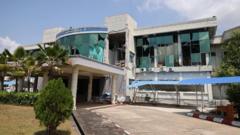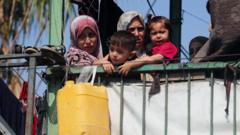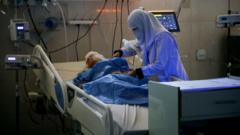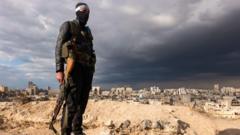In a recent statement, senior military officials in Myanmar confirmed that the capital city, Nay Pyi Taw, will be dramatically redesigned in the aftermath of a significant earthquake that struck the region. Senior General Min Aung Hlaing revealed that extensive damage was caused by buildings erected on soft soil and vowed that new constructions would be fortified against potential future earthquakes. The 7.7 magnitude quake, which occurred on March 28, resulted in over 3,500 fatalities and thousands of injuries, with approximately 70% of government buildings reported to be affected.
Myanmar's Nay Pyi Taw to Undergo Major Redesign After Earthquake

Myanmar's Nay Pyi Taw to Undergo Major Redesign After Earthquake
The military government announces plans for a complete overhaul of the capital's infrastructure following a devastating quake last month.
Nay Pyi Taw, established in 2005, is uniquely characterized by its expansive layout, covering an area four times larger than London, despite a much smaller population. The decision to relocate the capital from Yangon to this newly constructed city has always been shrouded in mystery, although officials had intended to create a grand planned capital. However, with nearly empty roads and vast infrastructures like wide boulevards and luxury facilities, Nay Pyi Taw has often been criticized for its lack of use.
Compounding the challenges, Myanmar has been embroiled in civil conflict since the military coup in 2021, which has strained resources and security throughout the nation. In light of the disaster, a temporary ceasefire was declared to facilitate humanitarian efforts, but reports indicate that military operations have persisted against rebel positions. Many government offices, such as the Ministry of Labour and Ministry of Planning, are still in ruins with no repairs underway. As a result, several agencies, including the ministries of Foreign Affairs and Tourism, have relocated to Yangon. The National Museum staff have also focused efforts on preservation, working to secure invaluable historical texts and cultural artifacts from the destruction.
As reconstruction efforts commence, the future of Nay Pyi Taw hangs in balance, serving both as a testament to Myanmar's trials and a chance for renewal amidst a tumultuous period in the country’s history.
Compounding the challenges, Myanmar has been embroiled in civil conflict since the military coup in 2021, which has strained resources and security throughout the nation. In light of the disaster, a temporary ceasefire was declared to facilitate humanitarian efforts, but reports indicate that military operations have persisted against rebel positions. Many government offices, such as the Ministry of Labour and Ministry of Planning, are still in ruins with no repairs underway. As a result, several agencies, including the ministries of Foreign Affairs and Tourism, have relocated to Yangon. The National Museum staff have also focused efforts on preservation, working to secure invaluable historical texts and cultural artifacts from the destruction.
As reconstruction efforts commence, the future of Nay Pyi Taw hangs in balance, serving both as a testament to Myanmar's trials and a chance for renewal amidst a tumultuous period in the country’s history.






















